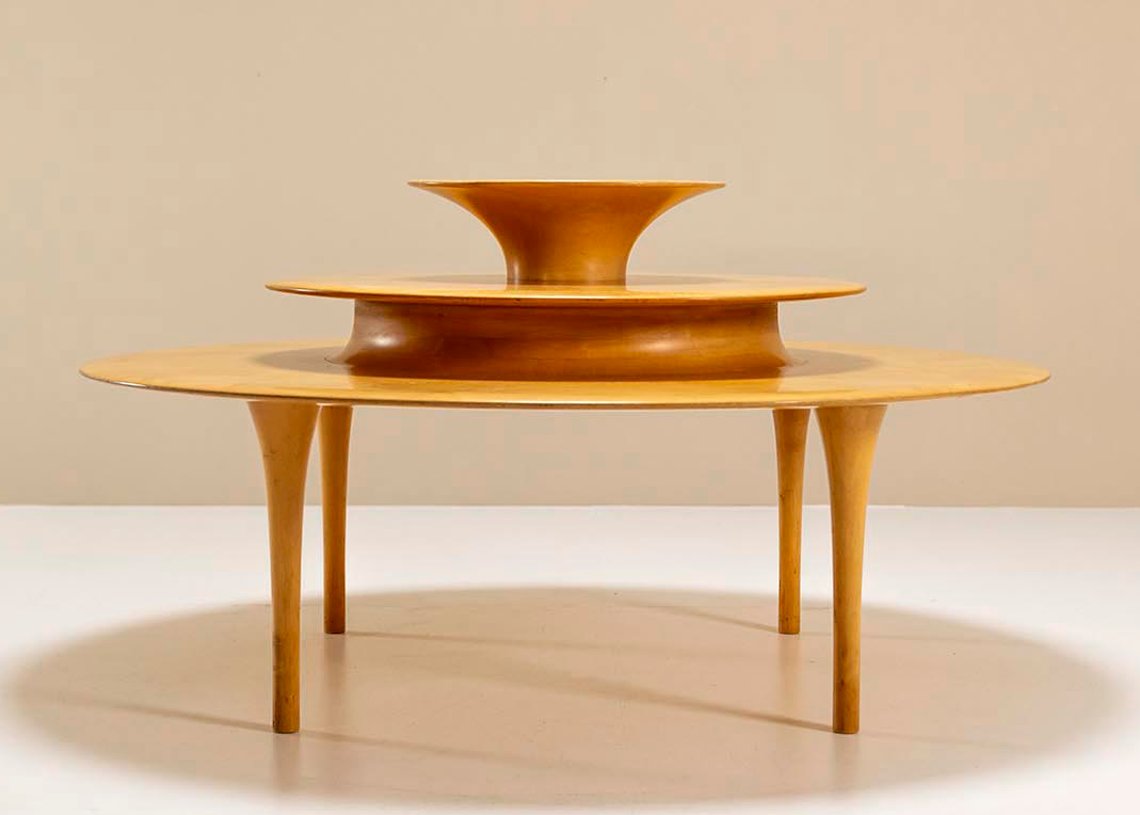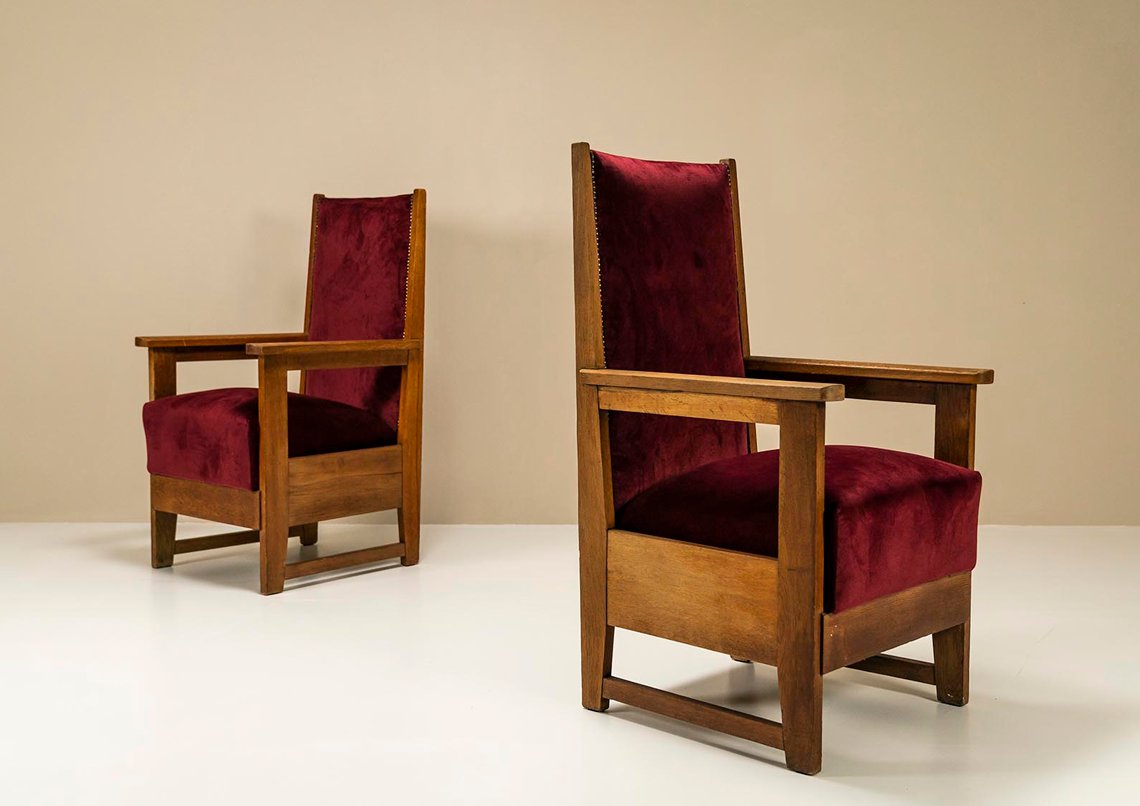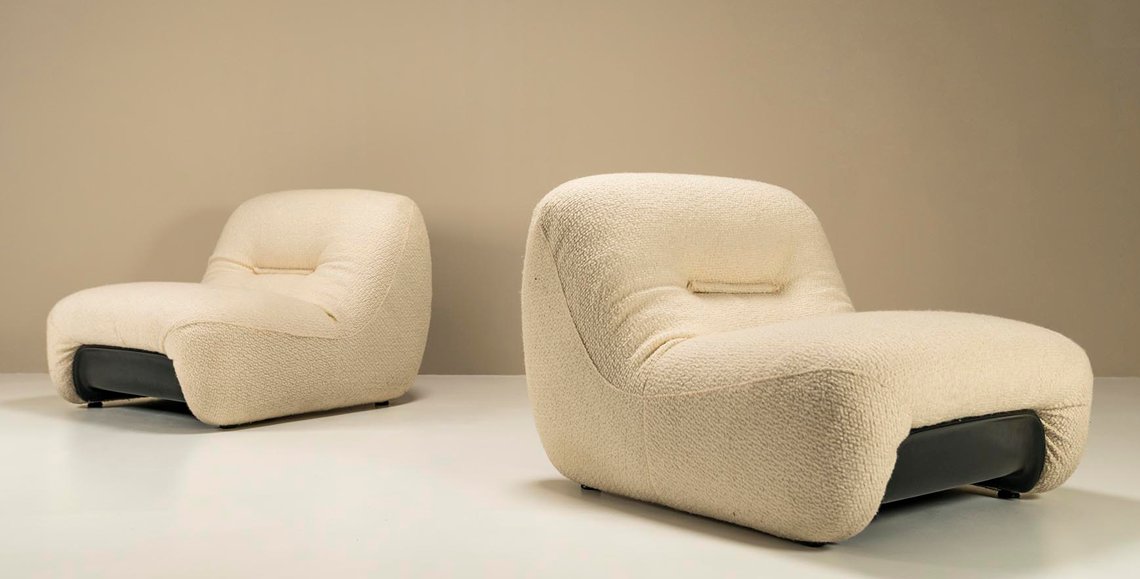From Dutch Art Deco to Brutalism, Curation is Key for AtKris Studio
From Dutch Art Deco to Brutalism, Curation is Key for AtKris Studio
 | |
| Krista van Oudheusden of AtKris Studio in the Netherlands. |
Krista van Oudheusden started as an oil company executive before giving it all up to join her husband in his burgeoning vintage furniture business. Today they own and operate AtKris Studio in the Netherlands and sell the best of the best modern 20th-century design to the world. Incollect Magazine spoke with Krista about her journey as a design dealer and her love and promotion of Dutch 1920s and 1930s Art Deco pieces, a period she believes is underrated and under-recognized in the market.
What do you specialize in and why?
We specialize in mid-century Danish, French, and Italian vintage furniture as well as Dutch 1920s and 1930s Art Deco pieces, furniture predominantly in a style known as the ‘Amsterdamse School’. Our initial pieces were Dutch furniture items from this period and it has always been special to us and our business. The Italian vintage designs we particularly like also, due to their timeless style and elegance.
How did you come to have a design gallery?
I worked for Shell for about 15 years and I asked myself whether I was happy with my job. I wasn't, so I quit my job and decided to invest more energy in my husband's love for antique and vintage furniture. He was already an antique hunter and he went to all kinds of auctions. Our house became filled with stuff. I started with a simple website and also selling items from my shed. In the beginning, these were mainly 1920s and 1930s furniture, as I mentioned. A couple of years later we expanded and are now in a warehouse with a showroom selling our furniture worldwide to interior designers and design professionals and lovers.
 |
| Krista admires this vintage 1960s Brutalist style stained pine sideboard by Spanish manufacturer Biosca. The geometric carving on the door fronts is similar to carving found on 17th-century Spanish doors, tying the modern form to history and to place. |
Tell us about the furniture you have on display right now—is there a piece you especially admire?
We currently have about 400 unique pieces on display that are a mix of items from 1920–1990. The piece I especially admire is the Biosca sideboard from Spain. We also have the matching dining table and chairs available as well. This sideboard was made by the Spanish manufacturer Biosca and is a paragon of the Brutalist style in furniture. Not much is known about this manufacturer and the available examples are rare and for good reason—they are robustly crafted and possess a timeless beauty. They are only getting more beautiful in my view.
 |  | |
| Left: Krista is sitting on one of a set of four highback “Ingram” chairs designed in 1910 by Charles Rennie Mackintosh for the White Dining Room of the Ingram Street Tea Room in Glasgow, Scotland. The set is a 1980s reissue by Cassina. Also seen here, an architecturally elegant vintage 1970s Angelo Mangiarotti S11 round dining table, with two slide-out hidden leaves that extend into an oval shape. Right: 1950s Italian curved and contoured sofa attributed to Federico Munari, conical brass legs, completely reupholstered in a rich red ochre velour. | ||
What makes 20th-century modern furniture so special, so important today?
Unlike other design periods, this period has a more universal and therefore timeless aesthetic and is also more functional and versatile than furniture from the other time periods. Many of the pre-20th-century pieces are more museum-type furniture items. We believe that the furniture we sell should be actively used.
 |
| An unparalleled round maple coffee table by the legendary Danish designer Nanna Ditzel for Brdr. Krüger from the 1980s, with two tiers plus a removable third tier bowl. Elegant, flowing design with peerless craftsmanship, this is an heirloom piece. |
Who do you think are the most important makers and designers from the 20th century?
As a female entrepreneur, I like to support female designers like Gabriella Crespi, Lina Bo Bardi, Nanna Ditzel and Charlotte Perriand. For them to survive in a male-dominated design world was an extraordinary achievement. They have paved the way for current female artists and designers.
 |
| These 1930s high-back oak chairs are the epitome of the Amsterdam School style — a perfect blend of functionality and aesthetics. |
Are there designers from the period that you admire and that you believe deserve more acclaim and attention?
The Art Deco period in The Netherlands had, next to the well-known designer Gerrit Rietveld, a few other great designers who today stand out for their unique and high-quality designs. The so-called Hague and Amsterdam School designers delivered remarkable pieces which are still quite affordable today. This period and its designers are relatively affordable and in my view greatly underrated.
 |  | |
Two fine examples of Dutch Art Deco: at left, in the Amsterdam School style, an oak side table with carved and ebonized decorations, circa the 1930s, and at right, from the same period, a Hague School coffee table in oak with walnut, oak and ebony veneer top. | ||
How is the market for 20th-century material today compared to 20 years ago?
It is difficult for me to know as I was not in business at that moment! But what I observe is that vintage design furniture has become more and more popular. And of course, due to the internet, there is a lot more transparency regarding items and their prices but also more access to several sales platforms such as Incollect. Therefore, you need to offer even more unique, high-quality and authentic pieces.
 |
| A pair of very voluptuous, very inviting “Malu” lounge chairs from the 1970s by Claudio Vagnoni for 1P, Italy. |
The quality of what you sell is pretty much exceptional across the board. Do you need to do a lot of restoring and refinishing of the things you buy before bringing them to the market?
Yes, we do. Every incoming item is thoroughly inspected. We have an in-house restorer working for us and every item gets some love; either a small touch-up or in some cases a full-blown restoration. Chairs and sofas usually need new upholstery.
Is there a strong demand in Europe for American 20th-century design or mostly it is for European modernism?
I would say there is in Europe a strong demand for primarily European Modernism. However, Brazilian pieces are popular as well as some select American designers like Vladimir Kagan.
 |
| A 1970s Carlo Scarpa “Samo” dining table for the 'Ultrarazionale' collection by Simon Gavina, Italy, exudes timeless elegance and beauty. Eye-catching architectural legs in a stylized interpretation of a Roman column have a sturdy monumental appearance. The gray granite contains diffused small fossils and shells and radiates a soft glow. Paired with one from a set of six vintage 1965 ”Model 300” dining chairs by Joe Colombo for the Italian manufacturer Pozzi, in oak with faux orange leather. |
Is good material hard to source these days or is there still a lot of material out there? Where do you source?
There is still a lot of material out there, however, we are getting more and more critical of the items. We want something to stand out and be either unique or just very good quality. Therefore, it does not always have to be a specific designer.
Which designers working today are you curious and excited about?
I am a big fan of the contemporary design by Rotterdam studio REM atelier. We have two beautiful cabinets in our private collection. They are a combination of wood and ceramics.
 |
| An imposing and visually arresting example of mid-century design with a strong brutalist influence, this vintage 1970s sideboard was designed and produced by Defour, Belgium. |
What do you see as being in demand now and how do you see that as a reflection of life in 2023?
We see a very strong trend towards brutalist and sculptural designer works and in truth a lot of wood. This probably relates to the need for expression and a craving for nature in our lives and is also a nice combination with both minimalist interiors as well as with more colorful ones. We also see a move away from white bouclé fabric to the use of colors like wine red and orange browns.
 |



























